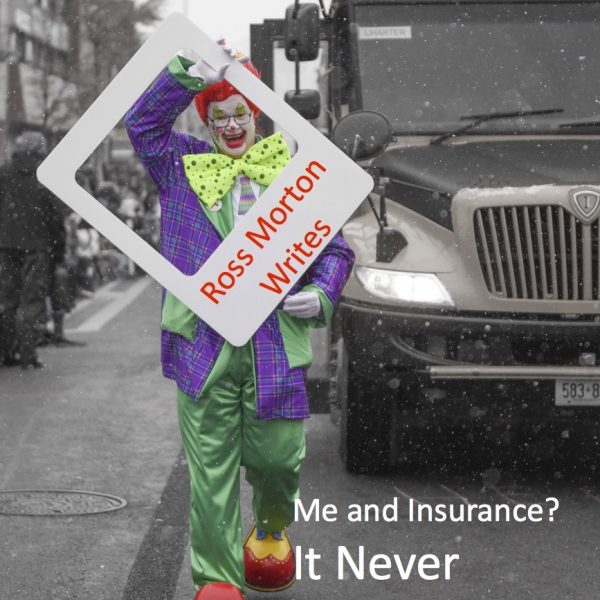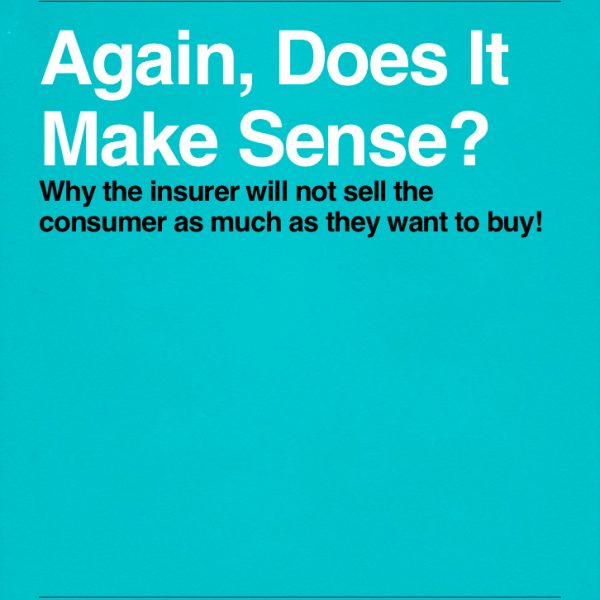I was still not convinced 100% by the end of the day. But now lets fill in the information I took away from a day with peers.
Being outside the decision making spectrum of the insurance world it is less likely that I would be invited to an industry leader’s (who services the risk selection domain) infomercial masked behind meals and golf. When asked I said yes not because of the meals or the golf (my golf game needs much remedial effort) but because the infomercial that was to be laid out was intriguing and could perhaps represent the next great turning point in the life and living benefit insurance world. I honestly and without fingers crossed attended even without the two meals and golf. The only down side to the event was that it would take up the whole day from 8:00 Am to 9:00 PM. I also wondered who from the decision making ranks of insurance would give up a whole day away from countless and meaningless meetings to attend an infomercial.
I could write a short thank you and say I enjoyed the day with the usual plaudits embellished with great thanks for the food, camaraderie, golf prices (not for longest drive or nearest pin so lets leave it at that), and anything else that came to mind when writing the Hallmark type thank you. Instead I decided to write an opinion paper on the day. I felt an urge deep within to be constructively critical knowing some would applaud the opinions while others would feel chastised for what was said or not said during the 13 hours. The following is written to constructive and yet it may end any chance of future invites to infomercials regardless of how they are dressed up.
As the day started what hit me first was the lack of significant decision makers from the leading insurers. I was sure that the “draw” of witnessing a new and better way of screening insurance applicants would attract every decision maker since how to underwrite faster, better and consistently was a stated priority of most insurers. As I gazed around the room I counted half the audience made up of the “host’s staff”. Then I saw some outsiders like myself who may have some influence in a few companies but we no longer control the purse strings of insurers’ underwriting departments. At my table alone there were three underwriters of four years or less experience and to my knowledge no where close to decision makers. There was also a renown underwriter but one with little management power. Yes from an education point of view great but when trying to sell a major change in risk selection tools you need those who control the purses. The days of open invitations to the milieu of underwriters I thought had disappeared with the last of the old time reinsures and third party vendors. Something about money well spent to get results (acceptance and orders).
First conclusion I came to was that this audience was not full of “buyers” — sort of like having a sales extravaganza for cars to an audience of 12 year olds.
The sessions started with actually some great stuff on medical items directly related to underwriting and full of information of value to risk selectors of all ranks. The presenter was passionate, clear and casual in style to the point I wished she had more time to share her insights and summaries of insurance medicine and laboratory results. I learned that the diabetes test for A1C was now a true indicator of diabetes and that even those in the shoulder levels of 5.7 to 6.1 are probably pre diabetics!. Figures tossed out, like there will be about 3.7 million diabetics by 2020 in Canada, resembled figures I had read by other medical authorities. I agreed that A1C has to be the test and we should rely less if not never on the glucose readings once a mainstay of underwriters. Perhaps we should screen all insurance applicants since the reward is so high (positives in the diabetic deniers or unknowns) and the price is “cheap”. Snippets of information on NTProBNP (Brain natriuretic peptide) as a heart failure test were not enough to convince me of its cost benefit reward just yet but it is getting closer. How long cotinine stays in the body was great information and it made me aware that those lying applicants who are smokers and can abstain for 4 days may sneak through. Come on if you can make it four days why not stop entirely. I think the actuaries still price for some liars (use to be 15% in the decades past) so our price is probably okay.
Second conclusion I came to was that the first session was well worth sitting still for as it had good information and was presented perfectly for any level of audience — wish the presenter had another hour as I am sure she could have filled the time with good stuff.
There was no hush of anticipation for the second session which was to be on the subject of a new underwriting tool but there was, I am sure amongst many like myself, a real curiosity. Were we about to witness the start of a new era in risk selection? Was there a better way? Was there a better and fairer system? Many of us had read the On The Risk article earlier in 2011 which perhaps left many skeptical. Would there be new facts and unequivocal evidence that this “new thing” was indeed right up there with sliced bread.(Note: I will refer to it as the “new thing” so as to offend less and not be seen as publicly roasting what my hosts were selling since indeed I did get golf, some prizes and two free meals.)
In a nutshell (nothing to be read into my choice of word) my hosts were selling the concept and software tool that could analyze laboratory results combined with BMI and rudimentary facts cleaned from paramedical measurements already used and predict mortality. The software tool was based on the study over six million files where my hosts had vital stats and blood work. It excluded those who were positive for cocaine or HIV. “New thing” could predict on what may appear to be an absolutely standard risk which applicants would die prematurely. Somewhat like the numerical rating system (fair, consistent, and used for almost 100 years) this “new thing” would use a complicated and proprietary computer system to assess extra mortality again along a numerical grid from good to bad so to speak. I heard them say 40 US companies were now using the system. I heard them say that the value per case was $238.69 which to me implied that if the cost was less than that it was money well spent. I also heard them say that reinsurers were onside with this new form of risk selection. We were shown some examples of cases that would have been issued standard but where the insured then died within two years. Wow this “new thing” is super since not one person in the room could have ever guessed that would be the outcome.
During question period I concluded that all the questions sounded like they were prearranged. I concluded that like myself no one wanted to ask embarrassing questions or cast doubt on what our hosts were touting as a super tool for risk selection. The “way it worked” was never really explained other than it took a long time to study the data and draw conclusions that helped form the foundation of the algorithm that defined the risk criteria.
Third opinion after the main feature presentation of the day was that I have to see for myself it working in a real live underwriting department. Will it save us money? Will it liberate the underwriter from the mundane? Will it pass the litmus test of the advisor and consumer? Will it help sustain underwriting as it comes under the scrutiny of many who feel it cannot be sustained in this world of ours? Will it indeed be the biggest game changer since the blood test!
Overall I can see the numerical rating system being modified with new tools like this “new thing” and I support work in that field. I am however not yet convinced that this “new thing” is ready for prime time. Lots of work to do. If the room had of been full of that rare breed the research actuary and pricing actuary I am sure questions would have been constructive. As it stood most shrugged and left so their bosses could arrive in time for golf.
The rain stopped just in time for golf and the hosts showed they can control the weather more than the audience of the morning. I was average in my foursome an did nothing to embarrass myself. I also only ended up down two golf balls.
Overall an old fashion day where prizes and fun surpassed serious news and thus attracted a weak morning audience but a higher level golf participation. I do not regret going but I do regret that more time allotted to the key address of the day. Maybe after the testimonials arise from all the reinsurers who endorse the system and those 40 companies using the system emerge will I have enough confidence to applaud the new numerical rating system as truly “the new thing” that all should employ.
Meanwhile who will invite me to their next infomercial?
PS Yes the food was good and the camaraderie great!

